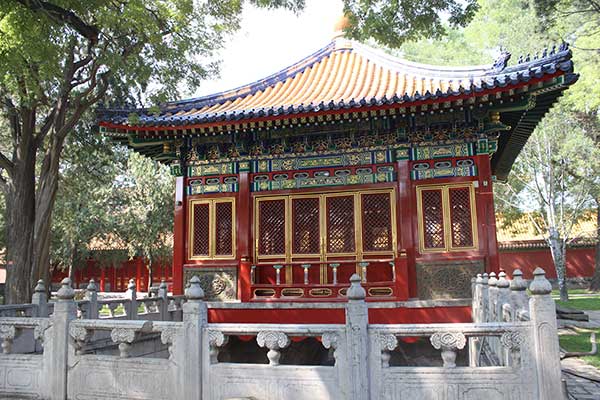Behind the veil of the Forbidden City's imperial harem
 |
|
A pavilion in Cining Gong garden in the Palace Museum.[Photo by Wang Kaihao/China Daily] |
In the mid-19th century the empire's power declined sharply, and empress dowagers moved out of the palace as a cost-cutting measure. However, Li Xieping, a researcher at the Palace Museum, says most Qing empress dowagers in later times chose not to reside in Cining Palace, partly because they did not want to be overshadowed by Xiaozhuang.
For example, Li says, when Xiaozhuang died, the Kangxi Emperor wanted to use the palace as a mourning hall, something his ministers dissuaded him from doing.
Shoukang Palace (the Palace of Longevity and Health) thus became a complement.
This palace in the west wing of the museum, built in 1736, has also been used as a warehouse for cultural relics. Empress Xiaoshengxian (1693-1777) was the first hostess in the palace.
In recent years, Empresses in the Palace, also known as The Legend of Zhen Huan, was a popular 76-episode TV series that focused on conflicts and conspiracies in the royal harem during the Qing Dynasty.
The story of Zhen Huan, growing up from an innocent young concubine to the lady who governs the hare, is a fascinating one, so it is little surprise that the public keenly awaits the opening of the residence of Empress Xiaoshengxian - a prototype of Zhen Huan.
This woman, among the longest-living empress dowagers in Chinese history, gave birth to Emperor Qianlong (1711-99), one of two most influential Qing rulers other than Kangxi. When Xiaoshengxian turned 80, the emperor was over 60, but he managed to dance to celebrate his mother's birthday.
Shan says Shoukang Palace will open next month after renovations are complete.
Other empress dowagers lived in the palace, too, but Shan says the era of Xiaoshengxian was chosen as a major reference point because of her status. About 70 cultural relics related to her will also be on display.
"Her virtue as a mother and deep emotional connections with Qianlong will come through," Shan says. "The public will also be given an insight into the flourishing Qianlong reign."
That era was the grand finale of the heyday of China's feudal empires.
















